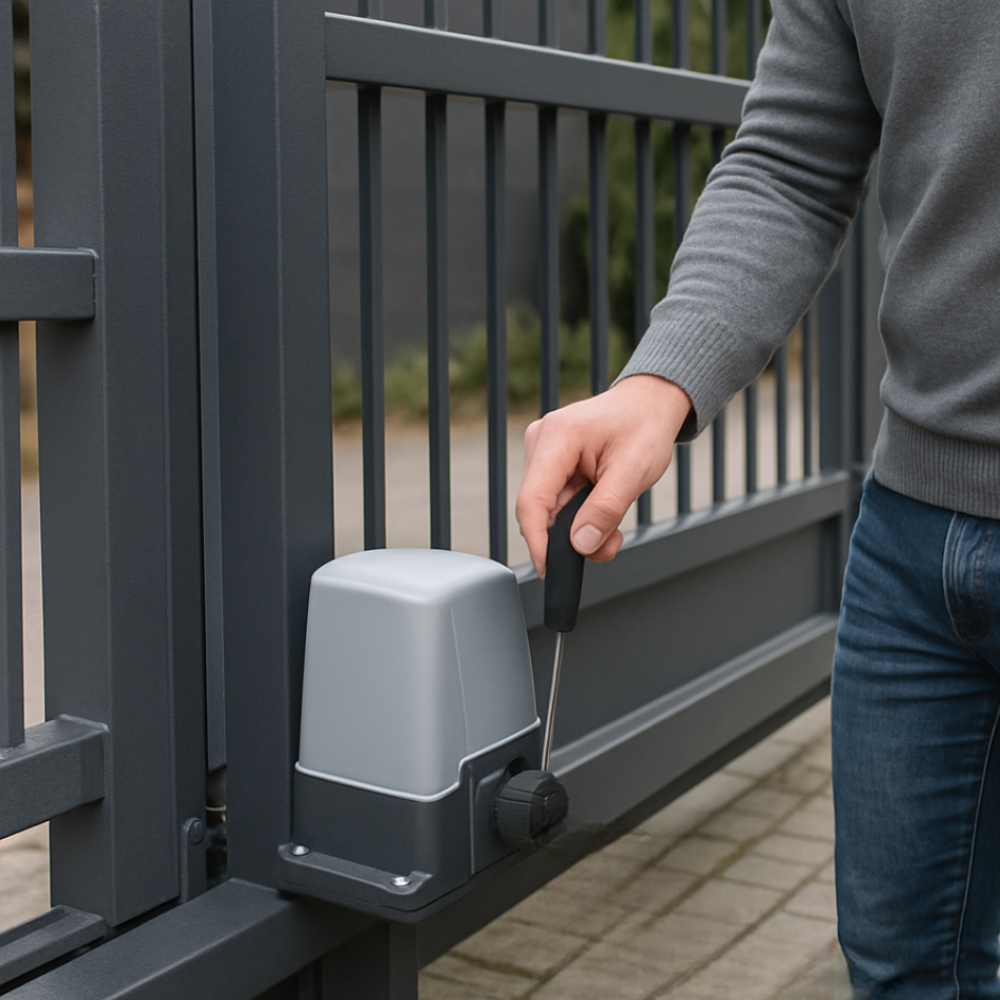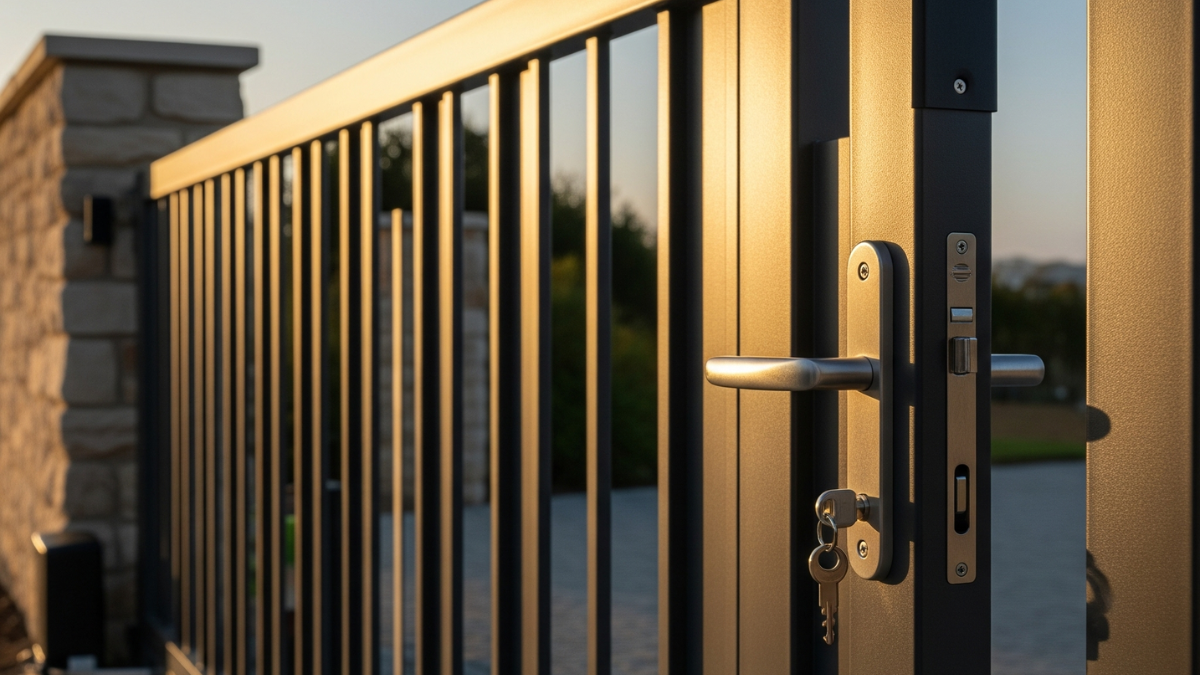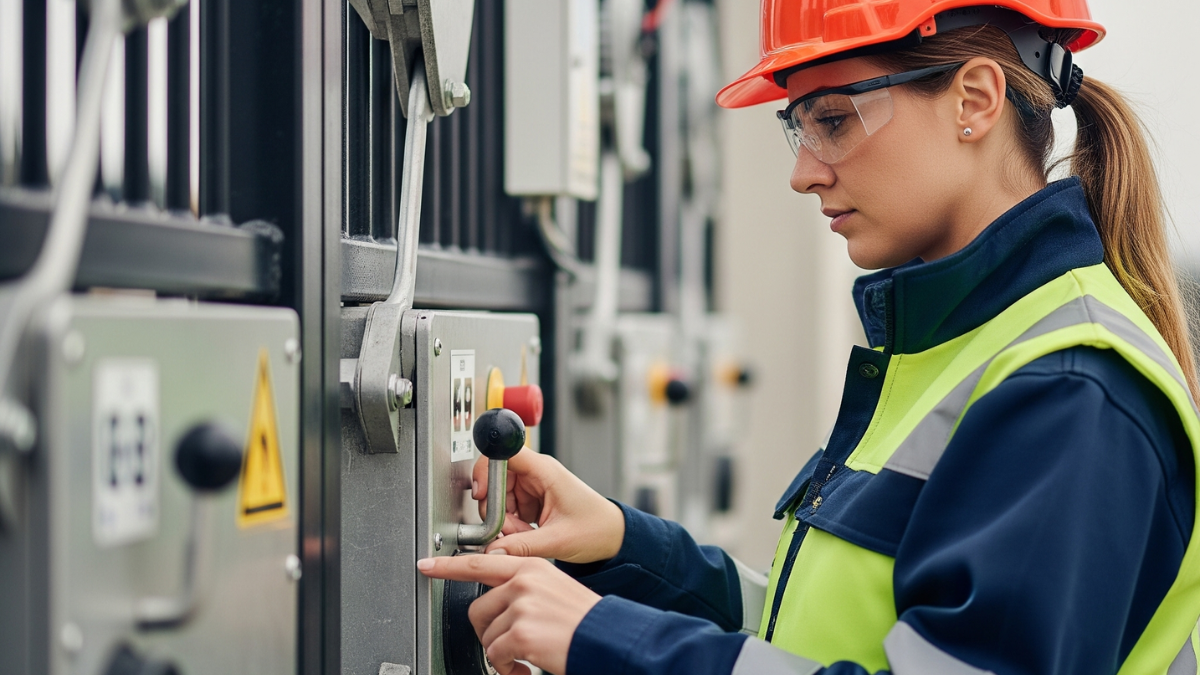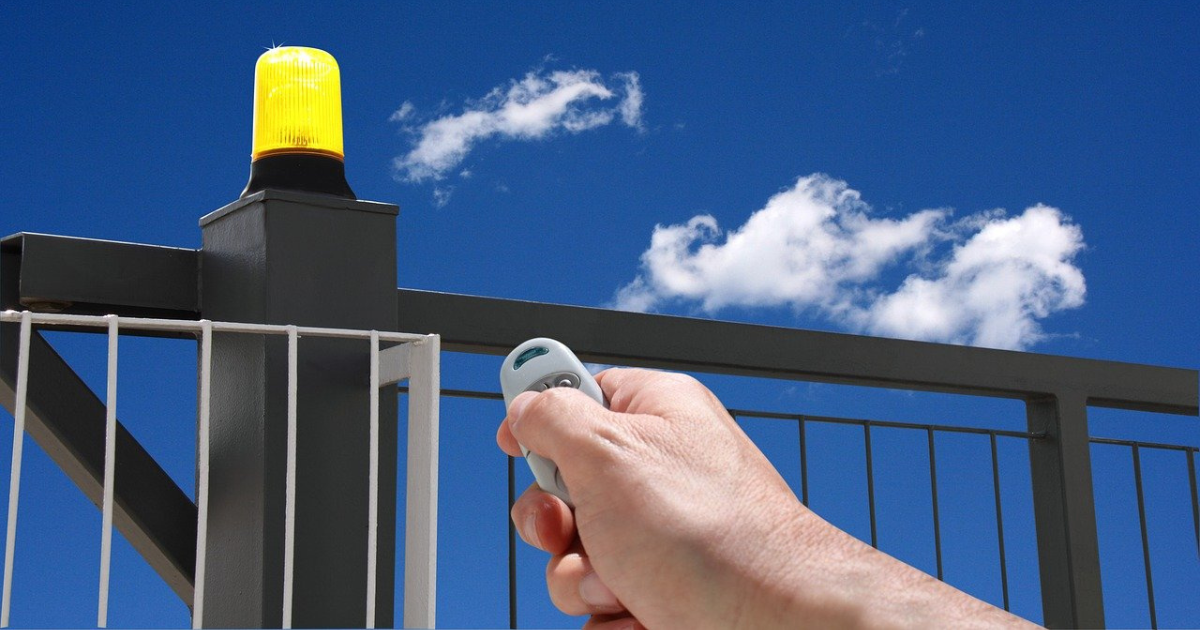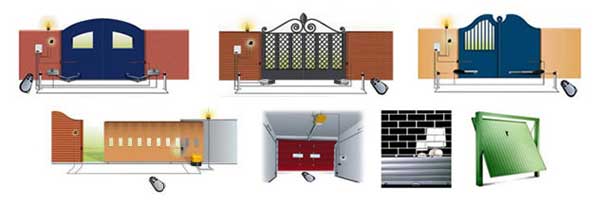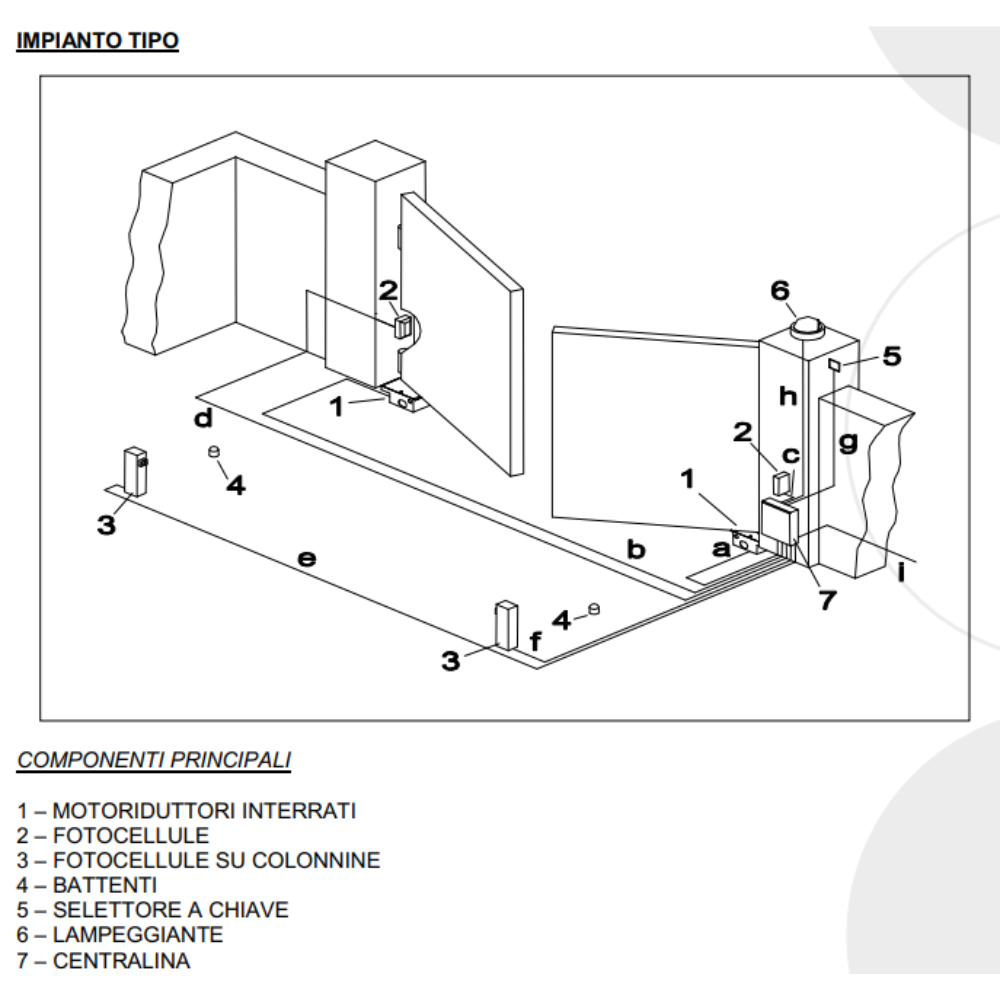What to do if you lost a gate remote: complete manual override guide
You’re rushing home after a long day, pull into your driveway, and realize your gate remote is missing. The panic sets in, am I locked out of my own property? Here’s the good news: learning how to open a gate without remote is simpler than you think.
Every professionally installed gate system includes built-in manual override mechanisms specifically designed for this exact situation. In the next minutes, you’ll discover the step-by-step methods to manually operate sliding gates, swing gates, and garage doors, plus smart alternatives that ensure you’ll never face this problem again.
No expensive emergency calls, no waiting until morning, just immediate access to your property using techniques developed through 50+ years of automation expertise.
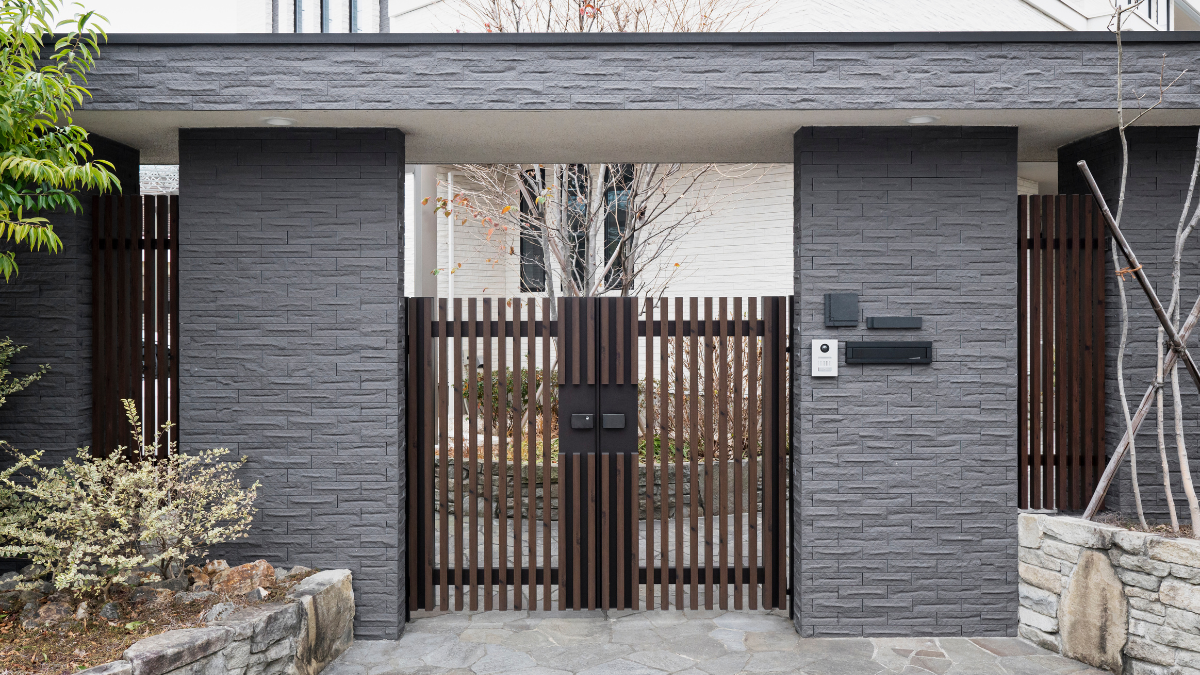
Source: Freepik
Understanding electric gate manual override systems
When faced with the question “what to do if you lost a gate remote,” the answer lies in understanding that every properly installed electric gate system incorporates manual override mechanisms. These safety features ensure that gates can always be operated manually, regardless of power outages, remote failures, or lost controllers.
Modern automation systems, developed through decades of engineering refinement, include multiple failsafe options designed to prevent property access issues. The manual release mechanism serves as the primary backup system, allowing property owners to maintain control over their gates even when electronic systems fail.
Professional-grade automation systems incorporate robust manual override features that reflect the manufacturer’s commitment to reliability and user safety. These mechanisms are engineered to withstand regular use while maintaining smooth operation over extended periods.
Tired of remote worries? Upgrade to Quiko’s reliable gate systems.
Experience 50+ years of Italian engineering excellence with automation systems designed for effortless manual override and smartphone control. Get a free consultation for your property’s specific needs.
Explore Quiko’s premium gate solutions →
How to open sliding gates manually
Sliding gates are among the most common automated entrance systems, yet many property owners remain unaware of their manual operation capabilities. Understanding the specific override procedures for sliding mechanisms can restore immediate access to your property, even when electronic systems fail completely.
Locating the manual release key
The first step in learning how to open an electric gate without a remote involves identifying the manual release mechanism. Sliding gates typically feature a manual release key located near the motor housing or along the gate track. This key, often disguised within a protective cover, provides direct access to the gate’s mechanical override system.
Step-by-step manual override process
To open a sliding gate manually, begin by locating the manual release key or lever mechanism. Insert the provided key into the release cylinder and turn it according to the manufacturer’s specifications. This action disengages the automated drive system, allowing the gate to move freely along its track.
Once the manual release is activated, the gate can be moved by hand with minimal effort. Quality automation systems ensure that manual operation remains smooth and requires only moderate physical force, reflecting the precision engineering that characterizes professional-grade installations.
Safety considerations for manual operation
When operating sliding gates manually, maintain awareness of the gate’s weight distribution and movement path. Ensure that the area remains clear of obstacles and that children or pets are safely positioned away from the gate’s operational zone.
Opening swing gates without remote
Swing gates present unique manual operation challenges due to their dual-motor configurations and weight distribution requirements. Understanding the specific override procedures for your swing gate type can mean the difference between quick access and prolonged lockout situations.
Dual motor system override
Swing gates equipped with dual motor systems require specific procedures for manual operation. Each motor typically includes its own manual release mechanism, necessitating the disengagement of both systems before attempting manual operation.
Single motor system manual release
For swing gates with single motor configurations, the manual release process involves accessing the motor housing and locating the manual override key. This system, refined through years of engineering development, allows for straightforward manual operation while maintaining the security integrity of the installation.
The manual release mechanism for swing gates reflects decades of innovation in automation technology, ensuring that property owners maintain reliable access regardless of electronic system status.
Garage door manual operation methods
Garage doors require different manual override techniques compared to standard gates, particularly when you need access from outside the building. These emergency procedures become essential during power outages, remote failures, or when the garage door keypad malfunctions.
How to open garage door without remote or key
Garage doors present unique challenges when remote access is unavailable. The manual override process typically involves locating the emergency release cord, usually identified by its red color and positioned along the garage door opener rail.
Emergency release cord operation
Pull the emergency release cord with a firm, downward motion to disengage the automatic opener mechanism. This action separates the door from the drive system, allowing manual operation. Quality automation systems ensure that this process requires minimal force while maintaining secure engagement during normal operation.
External manual override options
Some garage door systems include external manual override capabilities, allowing access from outside the garage. These systems, developed through extensive field experience, provide property owners with reliable backup access methods.
Alternative solutions: phone and keypad access

Source: Freepik
Modern technology offers sophisticated alternatives to traditional remotes, transforming your smartphone into a powerful gate control device. These digital solutions not only provide backup access but often deliver enhanced security features and convenience that surpass conventional remote controls.
How to open electric gate with cell phone
Modern automation systems increasingly incorporate smartphone connectivity, allowing users to operate gates through dedicated mobile applications. This technology represents the evolution of traditional remote control systems, offering enhanced convenience and backup access options.
Can i use my phone as a gate remote?
Smartphone-based gate control systems provide reliable alternatives to traditional remotes. These systems, developed through continuous technological advancement, offer secure access control while maintaining the reliability that characterizes professional automation installations.
Keypad access systems
Digital keypads serve as excellent backup access solutions, providing secure entry without requiring physical remotes. Professional-grade keypad systems maintain weather resistance and long-term reliability, reflecting the quality standards expected in automation applications.
Ready for smart gate control?
Transform your property with Quiko’s advanced automation featuring smartphone apps, keypad access, and multiple backup systems. 4-year warranty included on all Made in Italy products.
Discover smart gate solutions →
Troubleshooting common manual release issues
Even the most reliable manual override systems can occasionally present challenges, particularly in extreme weather conditions or after extended periods without use. Recognizing common problems and their solutions can save valuable time and prevent the need for emergency service calls.
Electric gate manual release not working
When manual release mechanisms fail to operate properly, the issue often relates to environmental factors or maintenance requirements. Regular inspection and maintenance of manual override systems ensure continued reliability and prevent access difficulties.
Mechanical component assessment
Professional automation systems incorporate high-quality mechanical components designed to withstand extended use. However, environmental conditions and normal wear patterns may require periodic maintenance to maintain optimal performance.
Lubrication and adjustment procedures
Proper lubrication of manual release mechanisms ensures smooth operation and prevents mechanical binding. Quality automation manufacturers provide detailed maintenance guidelines that reflect their commitment to long-term system performance.
Need expert help with your gate system?
Don’t let manual release problems leave you stranded. Quiko’s technical specialists provide immediate phone support and professional guidance for all automation systems.
Get professional technical support →
When to call professional automation experts
While many gate access issues can be resolved through manual override procedures, certain situations require professional intervention to ensure safety and prevent system damage. Recognizing when to attempt self-resolution versus when to contact automation specialists can save both time and costly repairs.
Complex system diagnostics
Certain manual override issues require professional assessment and repair. Automation systems with decades of development behind them incorporate sophisticated mechanical and electronic components that benefit from expert evaluation when problems arise.
Safety system verification
Professional technicians can verify that manual override systems meet current safety standards and operate according to manufacturer specifications. This service ensures that backup access methods remain reliable and safe for regular use.
System upgrade considerations
Older automation systems may benefit from upgrades that improve manual override functionality and overall reliability. Professional assessment can identify opportunities for enhancement while maintaining compatibility with existing installations.
Preventing future remote access problems
Proactive planning and regular maintenance can eliminate most remote access emergencies before they occur. Implementing a comprehensive backup strategy ensures you’ll never find yourself locked out again, while extending the lifespan of your automation system.
Backup remote programming
Maintaining multiple programmed remotes prevents single-point-of-failure scenarios. Quality automation systems support multiple remote devices, allowing property owners to maintain reliable access through redundant control options.
Regular system maintenance
Preventive maintenance schedules ensure that both electronic and manual systems maintain optimal performance. Professional automation manufacturers recommend specific maintenance intervals that reflect their understanding of system requirements and environmental factors.
Technology integration planning
Modern automation systems offer multiple access methods, including smartphone connectivity, keypad access, and traditional remotes. Comprehensive access planning ensures that property owners maintain reliable entry options regardless of individual component failures.
The integration of traditional mechanical reliability with modern electronic convenience represents the culmination of decades of automation industry development. Quality manufacturers combine proven mechanical engineering with innovative electronic systems to deliver comprehensive access solutions.
Professional-grade automation systems reflect the marriage of traditional manufacturing excellence with forward-looking technological innovation. This combination ensures that property owners receive reliable, durable solutions backed by extensive industry experience and customer-focused development approaches.
Through careful consideration of manual override capabilities, alternative access methods, and preventive maintenance practices, property owners can maintain reliable gate access regardless of remote control availability. The key lies in choosing automation systems that incorporate comprehensive backup solutions developed through decades of real-world application and continuous improvement.
Quality automation represents more than mere convenience—it embodies a commitment to reliable, long-term performance that reflects the manufacturer’s dedication to customer satisfaction and technological excellence. When selecting automation solutions, consider providers with extensive industry experience and proven track records of delivering dependable, customizable systems that meet specific property requirements.
Professional installer or distributor?
Join Quiko’s global network spanning 42 countries. Access premium Italian automation products with exclusive territory rights and comprehensive installation support.

